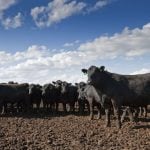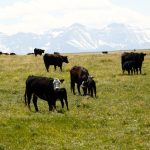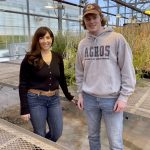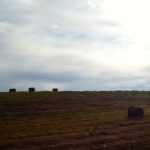
Forages

Making the most of available forage
Start the grazing season with a plan and lower cost of production over time
Developing a grazing plan is an important first step to ensure effective grazing management on an operation, and it can help save a producer on cost of production in the long run. A grazing plan that matches animal numbers to predicted forage yields should be made before turn out. Several key steps should be included: setting objectives […] Read more

Forage U-Pick online tool now available Canada-wide
The Canadian farms producing top-quality beef are as unique as our country’s topography. They do have one thing in common–each uses forages in some way. Forage U-Pick–a tool that helps farmers and ranchers from British Columbia to the Maritimes choose forages best suited to their fields, calculate seeding rates and manage forage weeds–is now available […] Read more

Saskatchewan to top up some claims for wildlife-damaged forage
Affected producers in southwestern, west-central areas eligible
Producers in southwestern and west-central Saskatchewan who lost stacked forage to wildlife feeding last winter may see a bump up in their compensation. The Saskatchewan and federal governments on Wednesday announced a “supplemental freight adjustment” to their wildlife damage compensation program, administered by Saskatchewan Crop Insurance Corp. (SCIC). SCIC, the province said, has “reassessed and […] Read more

New USask researcher focuses on growing forage production
Dr. Breeanna Kelln (PhD) loves to connect the dots, even when the dots are scattered and seemingly unrelated. “I don’t fit into any box. I do interdisciplinary work and because of that, I’m connecting all these different pieces and I find the work to be super exciting,” said Kelln, assistant professor in the College of […] Read more

Global study looks at grazing’s effect on drylands
A recent study is untangling the interactions between grazing pressure and climate on soil quality in different sites around the world. Dr. Fernando Maestre Gil, a researcher at the University of Alicante in Spain, was the lead writer of an article published in 2022 in Science magazine called Grazing and Ecosystem Service Delivery in Global […] Read more

Saskatchewan holds Crown grazing rents at last year’s levels
Also, leaseholders on drought-downgraded land eligible for rate cut
Cattle producers leasing Crown land for grazing in Saskatchewan won’t see a rate hike this year and may be eligible for a significant rate cut. The provincial government announced Wednesday it has frozen the rates charged to producers who lease Crown grazing land in 2023 at their 2022 level. The freeze will apply to all […] Read more

How do you store your hay?
Direction and spacing are two key things to consider
The hay is baled. But do you give much thought to how it’s placed in storage? With hay prices skyrocketing over the past year or so, weathering or loss in the stack are thoughts on more people’s minds than in years past. While there might not be an actual “right” way to store your hay, […] Read more

Grazing over-mature forages
Fall grazing has many benefits, but make sure the cow and calf’s nutritional needs are being met
Grazing mature cattle on mature forages and crop aftermath late into fall are options that reduce overall feeding costs. Kaliel and Kotowich (2002) reported that 60 per cent of production costs in a cow-calf operation are associated with winter feeding. Extending the grazing season reduces costs but there are limitations on what can be done. […] Read more

Rebuilding or replacing forage stands
By evaluating current and past management practices, you can avoid repeat mistakes
Before attempting to rejuvenate or replace pasture, we must evaluate the pasture or hay field that is in poor condition. Start by determining the plant species that are present and the number of plants per square foot. Collect information from 10 different locations within the pasture to get a good overview of populations. Also, record […] Read more

Turning weeds into feed
A variety of noxious weeds have been deemed as safe alternative forages for cattle
A noxious weed is an invasive non-native species that may reduce the yield of existing crops and forages if not controlled through herbicide application or by other means. Many weed species can be consumed by cattle and provide nutritive value during drought-induced feed shortages, while at the same time reducing herbicide use. Kochia (Bassia scoparia) […] Read more



